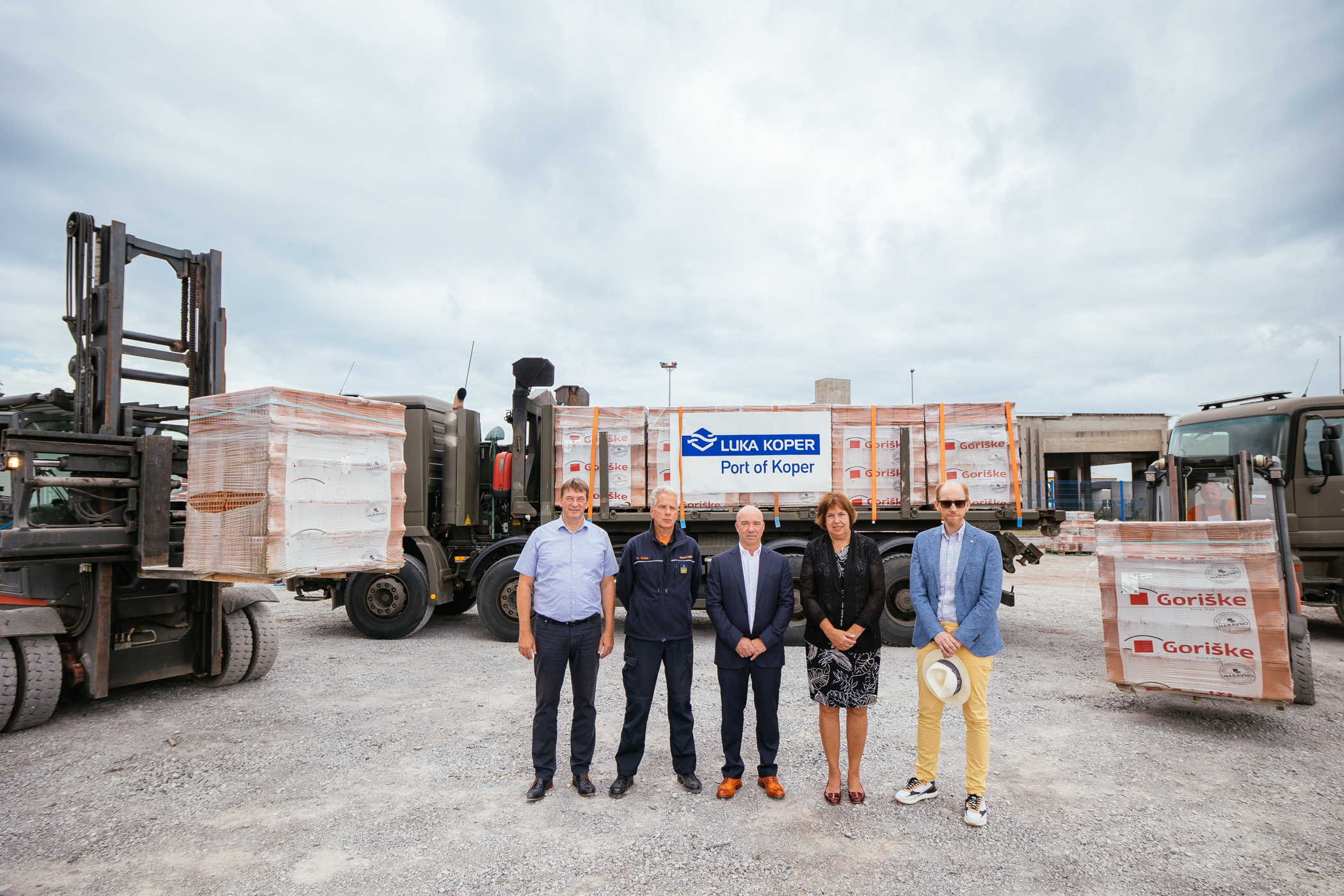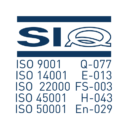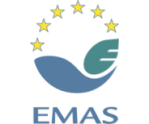At yesterday’s handover ceremony in Sežana, Nevenka Kržan, President of the Management Board of Luka Koper, Vojko Rotar, Member of the Management Board – Workers’ Director of the company, Vianej Višnjevec, Director of Goriške opekarne, and Mitja Dujc, Manager of Adria Terminali, handed over the last 55 pallets of bricks to the Commander of the Notranjska Regional Civil Protection Headquarters and Relief Co-ordinator, Sandi Curk. As Curk pointed out on this occasion, the regional headquarters, together with the Slovenian Armed Forces, will make sure that the bricks get into the hands of the right people, those whose homes have been badly damaged or completely destroyed by the floods.
“At the Port of Koper, we expressed our willingness and intention to help people in need in the very first days after the catastrophic storm. We established regular communication with the Slovenian Administration for Civil Protection and Disaster Relief which took over the coordination of aid at national level, and provided them with emergency equipment on the basis of their needs. Our employees also stepped up to help, either financially or on the ground, to deal with the consequences of the floods. In addition, the Workers’ Council, as it has done in the past, raised more than 42,000 euros by appealing to employees for donations from their personal income,” said Nevenka Kržan, President of the Management Board of the Port of Koper, on the occasion.
She added that the post-flood recovery will take months, perhaps even years, and promised that Luka Koper will continue to be active in providing support and assistance to those who need it most at the moment.
From marine sediment to charity with the support of EU funds
Besides serving for charitable purposes, the bricks have a clear port origin. As a matter of fact, they are made from dredged marine sediment, which the Port of Koper has acquired over the years during the dredging of the port’s basins. Already in 2014, in cooperation with the Slovenian National Building and Civil Engineering Institute, the EU-funded SafePort project carried out a study and identified the potential of dredged marine sediment, which contains a high proportion of clay and a suitable content of flint and carbonates, which are positive characteristics of brick products.
The final product, which provides frost resistance, low water absorption and high compressive and flexural strength, was made at Goriške opekarne. The brick wall elements, designed for load-bearing and non-load-bearing wall construction of residential, multi-dwelling and commercial buildings, comply with all technical requirements and applicable EU standards.
A few years ago, the Port of Koper also submitted the project of transforming marine sediments to bricks to the European Sea Port Organisation (ESPO) award and was shortlisted along with the ports of Huelva, Lisbon, Marseille and Rotterdam, winning a bronze award for its innovative project.




